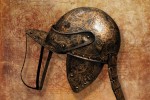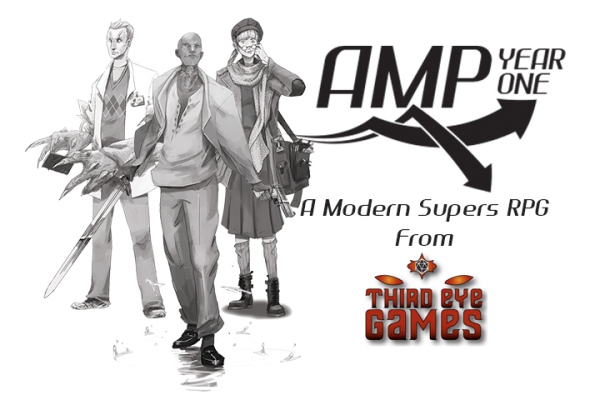By Aaron T. Huss
The following interview took place on Wednesday, September 21, 2011 via Skype. We are speaking to Ken Walton and Peter Cakebread of Cakebread & Walton about Clockwork & Chivalry and Airship Pirates.
The individual speaking is noted by the prefix RPC for Roleplayers Chronicle (Aaron T. Huss), PC for Peter Cakebread or KW for Ken Walton.
RPC: Welcome to another Roleplayers Chronicle interview session with Ken Walton and Peter Cakebread of Cakebread & Walton, designers of Clockwork & Chivalry and Airship Pirates.
Ken, why don’t you start by introducing yourself and giving a bit of your RPG background.
KW: OK! I’m Ken [Walton] – I live in Lancaster, UK. My first RPG [role-playing game] publication was WFRP [Warhammer Fantasy Roleplay] article for White Dwarf many years ago. I worked with my ex-wife Jo Walton (now an award-winning fantasy author) on such things as GURPS Celtic Myth, Realms of Sorcery for WFRP, and lots of articles for the British magazine “Arcane”. Then I had a rest for a few years and travelled round Germany, lived in a commune in Devon before coming back to Lancaster, doing a degree in the History of Science, then meeting Pete [Cakebread] and starting Cakebread & Walton…
RPC: Go ahead and introduce yourself as well Peter.
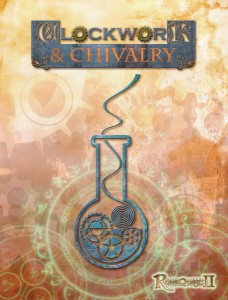
PC: I met Ken through a random act of kindness, he was getting rid of a bundle of RPG games on our local freecycle lists. We got talking, and I explained I started gaming in the early 80’s but hadn’t been playing of late due to not knowing many gamers locally. He invited me to join the group he was GMing, and a year later we began co-writing a novel. Then we pitched Clockwork & Chivalry to Cubicle 7 and decided to launch Cakebread and Walton.
RPC: What was the novel?
PC: It was a cosy, but quirky, murder mystery set in nineteenth century Morecambe, featuring two “heroes. A mixture of gentle pastiche and random whimsy. Ken had the idea a while before, but never got round to doing much with it. We chatted about expanding it and I think working together on that helped us to realise we could co-write.
RPC: Starting with Peter, what were the driving factors behind developing Clockwork & Chivalry?
PC: Ken had another idea for a novel on the backburner. We started to look at it together, and then realised it would make for a kick-ass RPG. We developed the simple idea at the heart of the original piece – an English Civil War where the Roundheads had clockwork tech, and the Royalists alchemical magick.
KW: It came from my dissertation when I was doing the History of Science degree. I studied a 17th century alchemist called Sir Kenelm Digby – he got turned into a female character who became Arabella Blackwood in the C&C [Clockwork & Chivalry] universe. But the degree got me very into the 17th century scientific/magical worldview, and we realised nobody had done an English Civil War RPG, even though its popular with wargamers and re-enactors.
PC: I’m generally a history nut. My formal education is all in the social sciences, but I’ve always been more interested in history, so already had a good grasp of the period. I’m a wargamer, and like a lot of wargamers I like to get a real feel of a period before I invest a lot of time in gaming it.
Knowing a bit about the period meant we knew there was a lot to be explored that simply hadn’t been seen in a RPG before – the different political and religious groupings made for a game where the emphasis wasn’t on good and evil, but on perspective.
RPC: Starting with Ken, why did you choose a d100 system and subsequently RuneQuest II [RQ II]?
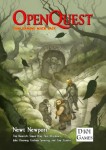
KW: Originally, we were looking for an OGL [Open Gaming License] system so we didn’t have to start from scratch. We both liked the D100 system and were planning to adapt OpenQuest [OQ] until Matthew [Sprange] at Mongoose [Publishing] offered us a RuneQuest II license. Now of course, the RQII license is disappearing, so we’re going back to OQ – although our Renaissance rules is going to be significantly different from either RQII or OQ.
I think C&C2 [Clockwork & Chivalry 2nd Edition] will be a lot better than it would have been had we done it as a standalone book a year and a half ago – we’ve got a lot of game design experience under our belt since then!
PC: In the 80’s I played a succession of games, almost as they came out. I loved them all. The stand out thing about Runequest and D100 at the time was that the gameplay seemed more “real” than a lot of systems. Phew, you really take your knocks in the game. I’m really excited that we now have an opportunity to tailor our own take on it through the Renaissance system.
RPC: You’re referring to the combat system?
PC: Yes, but when I’m thinking back, it was just a different take on setting a scene than some of the other titles seemed to manage. I played and enjoyed a lot of the early simple AD&D [Advanced Dungeons & Dragons] modules, but D100 offered more sandbox play. Of course, then WFRP “The Enemy Within” came along and seemed to marry all the elements that I love in a game into a glorious campaign…
RPC: When I look at how Clockwork & Chivalry and RuneQuest II are designed, I find the professions to be one of the strongest points especially when combined with your religious alignment. Starting with Ken, would you like to elaborate on those mechanics?
KW: Players get to choose a social class – Peasant, Middle Class, Gentry, etc, which gives them certain skills. Then they choose a Profession within that class – Alchemist, Farmer, Cavalier, etc. These are what you were before you became an Adventurer, where your particular skills came from. But once you start play, you’re not limited to that career (one of the things I like about D100 systems). You get to learn whatever new skills you want to, you’re not forced to focus on the skills and career you started with. On top of that are the Factions – religious and political groups. Your character has a Righteousness score which is how strongly he or she believes in the Faction to which they belong. This can sometimes lead to trouble, as you sometimes have to roll dice to see whether you react to something your Faction disapproves of. (For instance, a Puritan who fails a Righteousness roll might feel obliged to shout down a theatre show as immoral). Your Righteousness can go up and down through the game as things happen to you and other people try to sway your beliefs. Since there are “lots” of political and religious groups in the English Civil War, this can make for a lively time!
PC: Also, we started by trying to get a deep understanding of each Faction and each Profession ourselves. As much as each religious group, or trade, is different, individuals are all different, as well. So we try to both give enough information so that players know about their background, but also try to open up a lot of ideas on how an individual from that background might be motivated. So you might go hunting witches out of genuine fear or just because you can turn a coin that way. The main thing is that there is a heap of choice, but plenty of help to inform your choice of Adventurer.
RPC: Starting with Peter, how important is social, political, and religious conflicts to the Clockwork & Chivalry setting?
PC: It’s the heart of the game. Drawing from history, this is a time when the mass of people began to engage with having ideas on religion and politics. This was new and England was a foment of tension, new radical sects sprung up and after centuries of monarchy the people bound their god-given king in chains and did away with him. At the same time families were ripped apart through religious, economic and political differences. The war caused enormous division and turmoil, and even those who cared less about politics got caught in the cross-fire. at the same time, people often realised that they had a lot in common with those they were fighting, and simply got on with their neighbours despite the war. Contradictions like that are another real theme. And, if anything, we’ve cranked up the tension even more.
We’ve tried to take each grouping involved in the conflict and understand things from their perspective, and heck, there were a lot of perspectives.
KW: That said, there are also all the things you might expect of a fantasy game – ghouls and zombie plagues, and marauding dragons – as well as gigantic clockwork war machines, powerful alchemists and evil witches.
RPC: The setting definitely blends every theme together quite well. Are all the factions from the books actual, historical societies/sects?
PC: Yes, indeed, aside from the Tinker. Although obviously we’ve played around with some of them a lot, as the game has a Clockpunk theme. Some of the real historical inspiration makes for the most bizarre reading and worst gallows humour.
KW: Some of them are so bizarre you just “couldn’t” make them up. A cult who worship Satan to get power over horses? A Christian group who “celebrate mass” by going to the pub and getting very drunk and eating themselves silly?
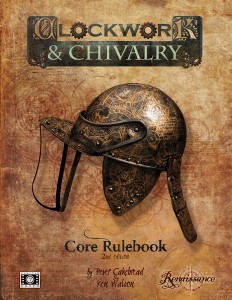
RPC: The “horse whisperer’s” in Divers & Sundry made me laugh. Let’s start talking about how all this blends into the new system Renaissance, starting with Ken. With the recent loss of the RuneQuest license and the upcoming release of the OGL-powered Legend, why create a new system based on OpenQuest?
KW: It was partly because we wanted our independence – not to have to worry about another company’s decisions. At the same time, we like the idea of the OGL, and we wanted to give something back for all the fun we’ve had role-playing over the years. So a lot of our new rules will be available in the Renaissance system for other people who want to include then in D100 systems. We’re aiming the system at the “early modern” period – more or less 15th to early-19th century – black powder weapons, the rise of a middle class, the beginnings of science, the printing press. Things that aren’t covered in any of the current D100 systems.
PC: The upshot is that 2nd edition Clockwork & Chivalry is going to be a gorgeous 400+ page standalone hardback, which will give you everything, and a whole lot more besides, to play the game. In addition the Renaissance SRD gives us, and others, the chance to build worlds, as Ken says, from Tudor times up to Napoleonics.
RPC: Starting with Peter, will the focus of Renaissance be black powder eras?
PC: We have a few ideas for the system, scattered through the eras, and possibly beyond. Black powder is the general tech level throughout. The SRD will hopefully tempt others to try out their own take on the system, and I look forward to seeing what they come up with.
RPC: There’s a definite shortfall for black powder technology systems in the RPG industry. Plenty of settings incorporate these types of weapons, but none are really designed around them. Can you also talk about how this technology level is an integral part of the system design?
KW: Sometimes it’s the little things. Like armour having two values – one for protection against most weapons, the other (lesser value) against guns. Getting the prices right – (Peter’s been battering his head with this week) – swords, for instance, are nowhere near as expensive compared to other things as they are in most fantasy games.
PC: It’s the whole feel of the era. The era is all about new ideas, but people haven’t quite got the methodology right to really understand things. So if you visit a physician with a headache, he still might decide to stick a piece of paper with the “Lord’s Prayer” onto your forehead, if someone has a fall and an old woman looked at them funny, they might suspect witchcraft. At the same time people were asking questions that a century or two before would have been considered heretical, they’re just struggling to answer them. The tech is similar, it’s new, and in Clockwork and Chivalry it’s also slightly bizarre – but stripping out the Clockpunk tech, we’ve made sure that the Renaissance is well and truly fleshed out. As you say, it’s something that has been missing, and a pleasure to research and write. We’ve tried to be as authentic as possible and really describe the times.
RPC: Starting with Ken, considering the OGL aspect of Renaissance, what will be considered Open Gaming Content and what will be Clockwork & Chivalry setting content?
KW: Most (probably all) of the rules will be open, and things like equipment lists, spells, etc. The information about the C&C world will remain our copyright. Obviously you can’t copyright Oliver Cromwell, but the fact that he’s got an army who ride on clockwork motorbikes you can! The rules will be there for anyone else – if someone wants to do a game set in Elizabethan England or whatever, a lot of work will be done for them already, they’ll just need to add the details and flavour. I imagine as we come up with new rules for new products, they’ll be added to the core Renaissance system for anyone to use.
PC: Yep, the Renaissance system will be freely available according to the terms set out in the SRD, the C&C setting will only be usable with permission.
KW: Things like Professions will be in the SRD, with their stats, but not a huge paragraph about the position of that profession in 17th century England. The Righteousness rules will be there, with a few example Factions, but not all the specific Factions of the C&C world. And so on…
PC: We want to make it as easy for people to use as we can, so hopefully people will find the Renaissance SRD easily accessible and off they go…
RPC: Starting with Peter, what changes are being made to Clockwork & Chivalry to produce the new Renaissance system?
PC: The actual setting hasn’t changed at all – although many of the sections in the book have been re-edited, more fully illustrated, expanded and treated to a fresh layout. There is a lot of new material in there though to make it standalone – we’ve greatly expanded the equipment section, the magick has had an overhaul, etc.. Some rules have been written from scratch, some rules brought in line with OpenQuest, and some things were already our own, so remain largely unchanged. We will bring out a conversion document for those with the 1st edition, although I hope we’ll be able to tempt some people over to the new one, as it is looking so good.
KW: Sometimes its little things like making the rules “feel” less generic. So for instance, spells have new names that better fit the setting – instead of the bland “Summon Water Elemental” we have “For the Summoning of an Undine” etc. It all helps people get into the spirit of the setting.
RPC: Are you incorporating any material from subsequent supplements into the new core rulebook?
KW: Yes – a lot of Divers & Sundry will be in there, and bits and pieces that turned up in some of the adventures which have a more general use for players and GMs.
RPC: Starting with Ken, what are your plans for the Kingdom & Commonwealth campaign series with the move to Renaissance?
KW: The books we’ve already done are going to be revised for the new system and re-issued, possibly in 2 omnibus volumes (we haven’t quite decided yet), then the last two supplements, “Hobbes: Leviathan” and “London Calling.” Not sure of the timetable for that, it depends on our other commitments. We also have ideas for other C&C supplements, as well as other games using the Renaissance system, but we’ll have to wait and see how things go!
PC: We’re so proud of the Kingdom and Commonwealth campaign as it stands. Again, the 2nd edition will have a fresh look, and we’ll provide conversion details for those that need them. The series has been entertaining to write, and we hope people will be looking forward to finding out what happens next.
RPC: Would either of you like to give a preview of what new supplements you have planned?
PC: For C&C we have the last two adventures that Ken mentioned, “Hobbes: Leviathan” and “London Calling”. We have some other settings planned for Renaissance, but we’re keeping them under our wide-brimmed hats for now. Of course, we have a bundle of releases planned for our other line, Abney Park’s Airship Pirates RPG, as well. And we have other projects in the pipeline too. It seems it is going to be another busy year for Cakebread & Walton.
KW: Our trouble is we have more ideas than we could develop in our lifetimes – it’s deciding which ones we “really” want to develop.
PC: Our next all-new C&C release, “Hobbes: Leviathan” is going to take the Adventurers to Paris and other locations in France. Expect intrigue and danger, and as usual one or two surprises. It’s certainly not going to get easier for any Adventurers that have battled through the whole campaign to get there. As usual there will be the option to play the adventure as a part of the K&C series, or on its own.
As Ken says, the sad thing is we have more ideas of games and books to write than we will ever manage to actually do. That said, the speed we seem to be going at the moment, who knows?
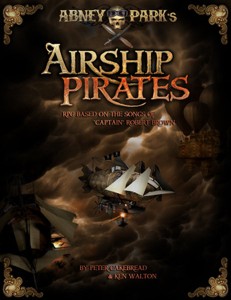
RPC: Let’s talk Airship Pirates. Considering how quickly it sold out at Gen Con, have either of you received a lot of positive feedback from the general community?
KW: Nothing but!
PC: It’s been brilliant! A fan community has already sprung up, people are posting game reports (I’m thinking of you, John) and a host of suggestions and fan materials.
RPC: That’s excellent! Starting with Peter, how do you plan on following up the initial release?
PC: The next release is going to concentrate on the time travel aspect of the game, and in particular on how a party of characters can “screw up” the timelines. The game is set in a post-apocalyptic age which has been screwed up already by Captain Robert and Abney Park. We want gamers to have the same freedom to roam through history and spoil it.
It’s called “Blasting the Past”. After that we have sourcebooks for the major cultures coming out. Starting with the neo-Victorians.
Blasting the Past and the subsequent releases will all be substantial color hardbacks. Airship Pirates RPG is going to be extremely well supported over the coming year.
RPC: Considering your current revision of Clockwork & Chivalry, when do you expect Blasting the Past to be available?
KW: I think we’re thinking January/February at the moment. Is that right, Pete?
PC: Yep, possibly a little before, but it is going to be dependent on the printers. Working on Airship Pirates is a little different from C&C as we co-work with Robert and a much wider pool of artists.
Captain Robert has been very involved in the project from the start and the artists have worked extremely hard to get the finished article looking as superb as it does. We want to maintain that level for the next releases.
RPC: How is the band involved in the products themselves?
KW: It’s Robert who we deal with – not sure what the rest of the band is up to! :) Robert’s very much the creative guiding force behind the Abney Park world – the song lyrics, the backstory he’s telling in the novel, etc.
PC: From the start it has been a collaboration. The setting that Robert has created through the band’s discography is his baby. He has let us get on and write the game, and been supportive at every stage, but he has also always had a clear idea about how the game world should be consistent with the Abney Park world. As of yet, you don’t get to play the band as characters (or meet them as NPCs), but I wouldn’t rule it out…
Robert has also been responsible for the graphics and design elements of the book – and what a cracking job he has made of it.
RPC: So is this a world that he has novelized in the past?
KW: He’s just finished a novel which he’s planning to publish sometime soon. He was still working on it as the game was coming together, and we kept getting sent extra chapters as it went along. It’s very much the story of the band in the time-travel adventures – how the world of the RPG came to be as it is. It’ll have some background secrets in there that you won’t get in the game…
Some of the lyrics of the songs are supposedly being written in the world of the novel as the band has their adventures. It’s an interesting mix of fiction and autobiography.
RPC: I have one last question before wrapping this up. Why did you choose the Heresy Engine to drive Airship Pirates?
PC: We had various options, but decided that the Heresy Engine best suited the setting. It is simple enough for new players (good dice, bad dice) but also has plenty of crunch for those that want it. One of the pleasures with Airship Pirates is that as well as being highly anticipated by gamers, it has also been highly anticipated by Abney Park fans. Abney Park is huge in the Steampunk community, and like other gamers we love our hobby, and bringing new people to the table is always a pleasure.
KW: We’ve had a fair number of people saying “I’ve never role-played before, but I’ll give this a go” and others saying “I haven’t role-played for years, but this is getting me back into it.” And yes, the Heresy Engine is really simple to play or run. And it also gives players and GMs the opportunity of taking stuff from the Victoriana RPG and Dark Harvest if they want, for a good old steampunk mash-up!
RPC: The Victorian connection makes a lot of sense. Thank you Ken and Pete for giving me this time to interview the both of you. As stated before, this interview will appear in Issue #2 of the Roleplayers Chronicle eZine as part of the website’s Premium Content offering. I look forward to seeing how Renaissance turns out and hope to see more from Cakebread & Walton!
PC: You are most welcome. Thanks, as ever, for all you do for us and the hobby, Aaron. And next time, I’ll try to remember that Skype doesn’t have a spell checker. Take care.
KW: Yes, thanks Aaron!
